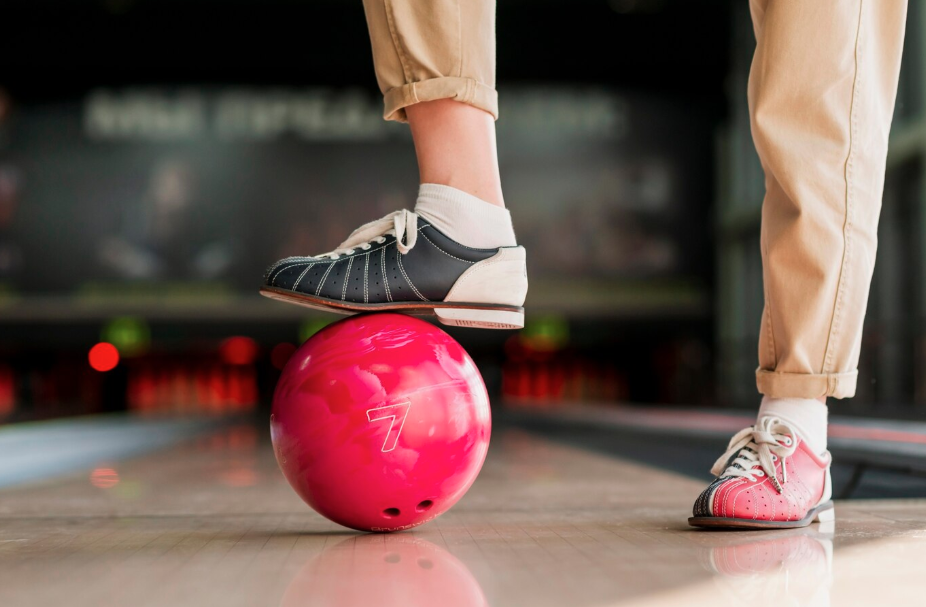So Simple, So Effective: Bowling Technique for Beginners You’ll Master Today

Before you take that first step toward the lane, your grip sets everything in motion. A secure yet relaxed grip is the first secret behind the best bowling technique for beginners. Your thumb goes in fully, and your middle and ring fingers sit just below the second knuckle. Avoid choking the ball—keep your hand loose enough to allow a fluid release. A good grip gives you control without effort. Without a balanced hold, your shots will drift off course, regardless of your aim. Always inspect your ball size and hole fit—it should feel like an extension of your hand, not a weight to manage. Practice gripping with different ball weights until your hand feels aligned and steady. Trust this foundation. It sets up everything that follows.
Walk It Right: Movement That Feels Natural
Instead of robotic steps, let your body move with comfort and rhythm. Start with a simple four-step approach. Your pushaway should start on the first step, your arm swinging back naturally as your feet guide the rest.
The real key? Don’t rush it. Each step should feel connected. Rushed footwork throws off timing and direction, so slow it down and feel the motion.
Keep your shoulders relaxed, knees bent, and body centered. That centered feel makes your release more accurate. Find a tempo that keeps you steady—it doesn’t need to be fast, it just needs to be smooth.
Even if it feels awkward at first, repetition will turn movement into second nature.
The Swing That Does Half the Job For You
Most beginners think power equals performance—but it’s the opposite. Your backswing should feel like a pendulum, not a hammer. Let gravity do most of the work.
Keep your arm straight, your shoulder loose, and follow through all the way to your target. A clean swing builds consistency faster than any fancy trick.
A proper swing feels effortless. Don’t overextend. Keep the motion fluid and let your timing do the lifting. You’ll find that smoother swings carry better down the lane and give you more control over pin action.
Eyes Off the Pins—Yes, Really
One of the biggest beginner mistakes? Aiming at the pins. Use the arrows or dots on the lane to guide your throw. These are your real targets. Pick one that aligns with your angle and focus only on hitting it.
It’s a subtle switch, but your aim will sharpen almost instantly. Professionals never look at the pins—neither should you.
By training your eye on closer reference points, your throw becomes more repeatable. This is where control starts—one arrow at a time.
Keep That Wrist Calm and Collected
Tense wrists ruin great releases. Beginners often twist or jerk their hand, hoping for spin. But spin comes from rotation—not force. Keep your wrist firm but neutral. It should act like an extension of your arm, not a steering wheel.
Once your base is strong, you can add spin later. For now, think: straight wrist, smooth release, clean shot.
Let the ball roll off your fingers naturally, and don’t force it to hook. A clean release is much more valuable at this stage.
Speed Isn’t Strength: Let Timing Win
Throwing harder doesn’t mean scoring higher. Speed without control leads to gutter balls. Your best shot comes from timing—not muscle.
Watch your release point and keep your follow-through smooth. If your hand ends near your face, you’re doing it right.
The goal is to maintain the same release zone every time. Speed will come later—right now, focus on hitting your marks and keeping a steady pace.
Read the Lane Without Overcomplicating
Oil patterns may sound too advanced for beginners—but noticing how your ball behaves is enough. Is it sliding too far? Hooking early? Adjust your target slightly. A 1-inch change in your stance can shift your shot by feet at the pins.
You don’t need deep knowledge—just sharp observation.
A ball that skids too long likely needs more angle. One that turns early may need a wider path. Let the lane speak and tweak based on what you see.
Consistent Form Beats Fancy Tricks
Forget trick shots. Forget spin hacks. Repetition builds confidence. Aim to repeat the same motion every time—same steps, same grip, same release. Only tweak one thing at a time so you know what’s working. The best technique for bowling isn’t hidden in tutorials—it’s built on reliable moves repeated correctly. Once the basics stick, scores naturally climb. Real growth starts with disciplined repetition.
Closing Note:
At Ten Pin Doctors, we’ve helped hundreds of new bowlers build a solid foundation. Our sessions focus on clean, effective technique that anyone can learn—fast. We don’t believe in shortcuts, just smart coaching and simple drills that get real results. We tailor every tip to fit your pace and skill level. With us, your game won’t just improve—it’ll feel effortless.
Ready to roll with confidence? Contact Ten Pin Doctors today and let’s get your form tuned up right. Your lane success starts here.
FAQs:
Q1. How should a beginner hold a bowling ball?
Beginners should use a relaxed, conventional grip with fingers inserted up to the second knuckle.
Q2. What is the ideal number of steps in a bowling approach?
A four-step or five-step approach offers balance and rhythm for consistent throws.
Q3. Should beginners focus on spin or accuracy first?
Accuracy is more important initially; spin can be added once control is developed.
Q4. Where should a beginner aim while bowling?
Focus on lane arrows, not pins—this improves targeting and control.
Q5. Does bowling speed matter for beginners?
No, controlled timing is more effective than speed for building reliable technique.
You must sign up or log in to add comments to this blog article.
 Login
Login